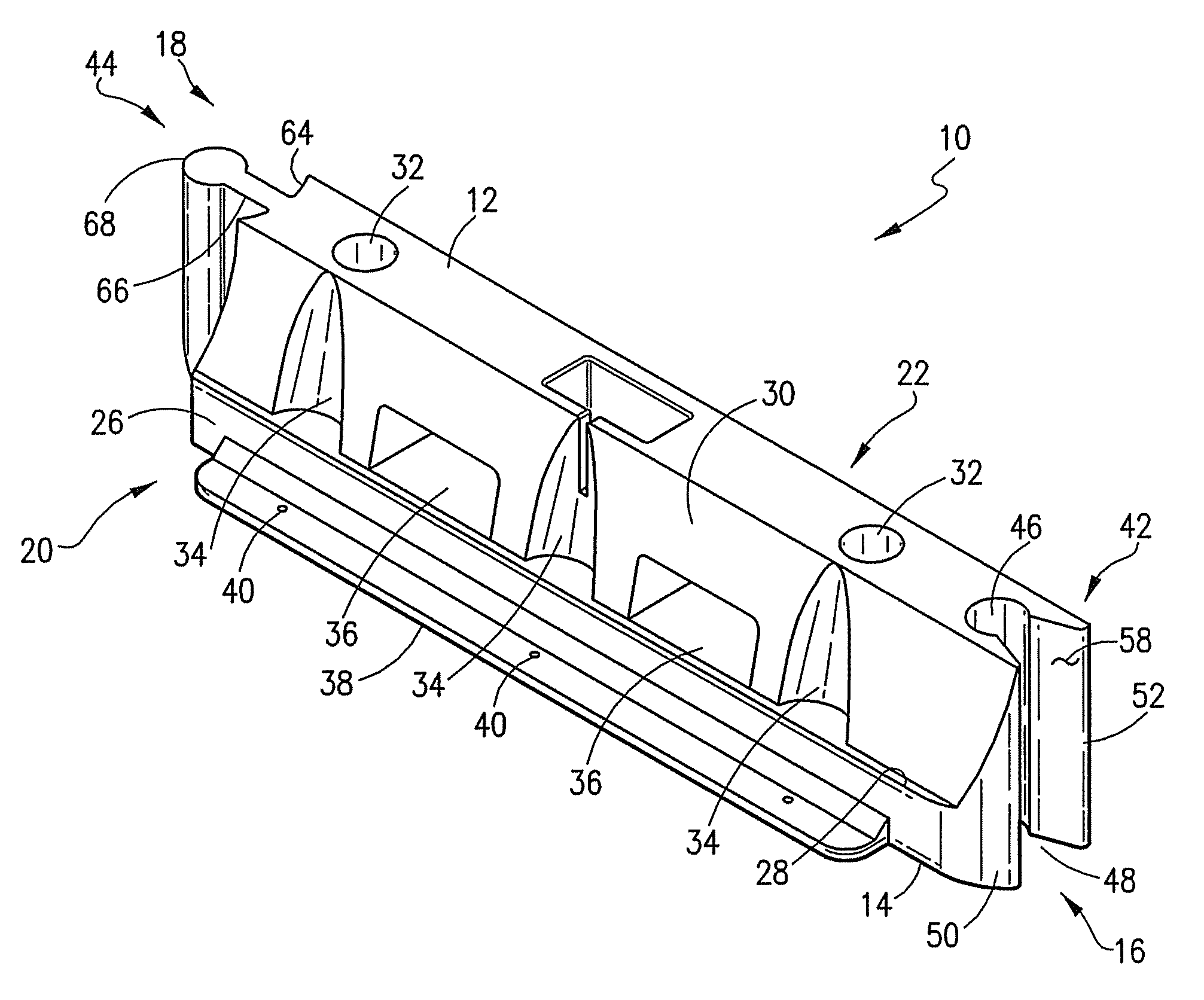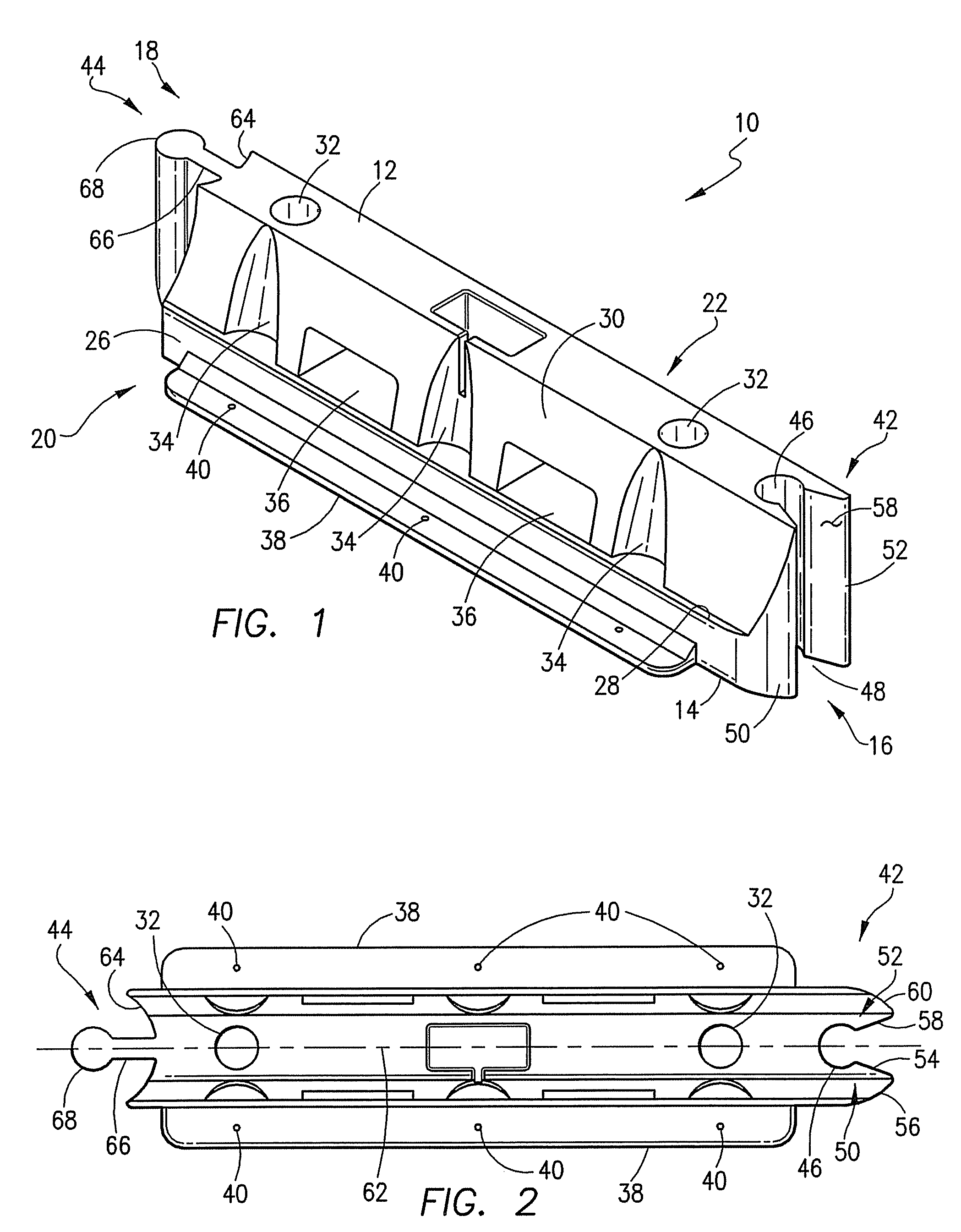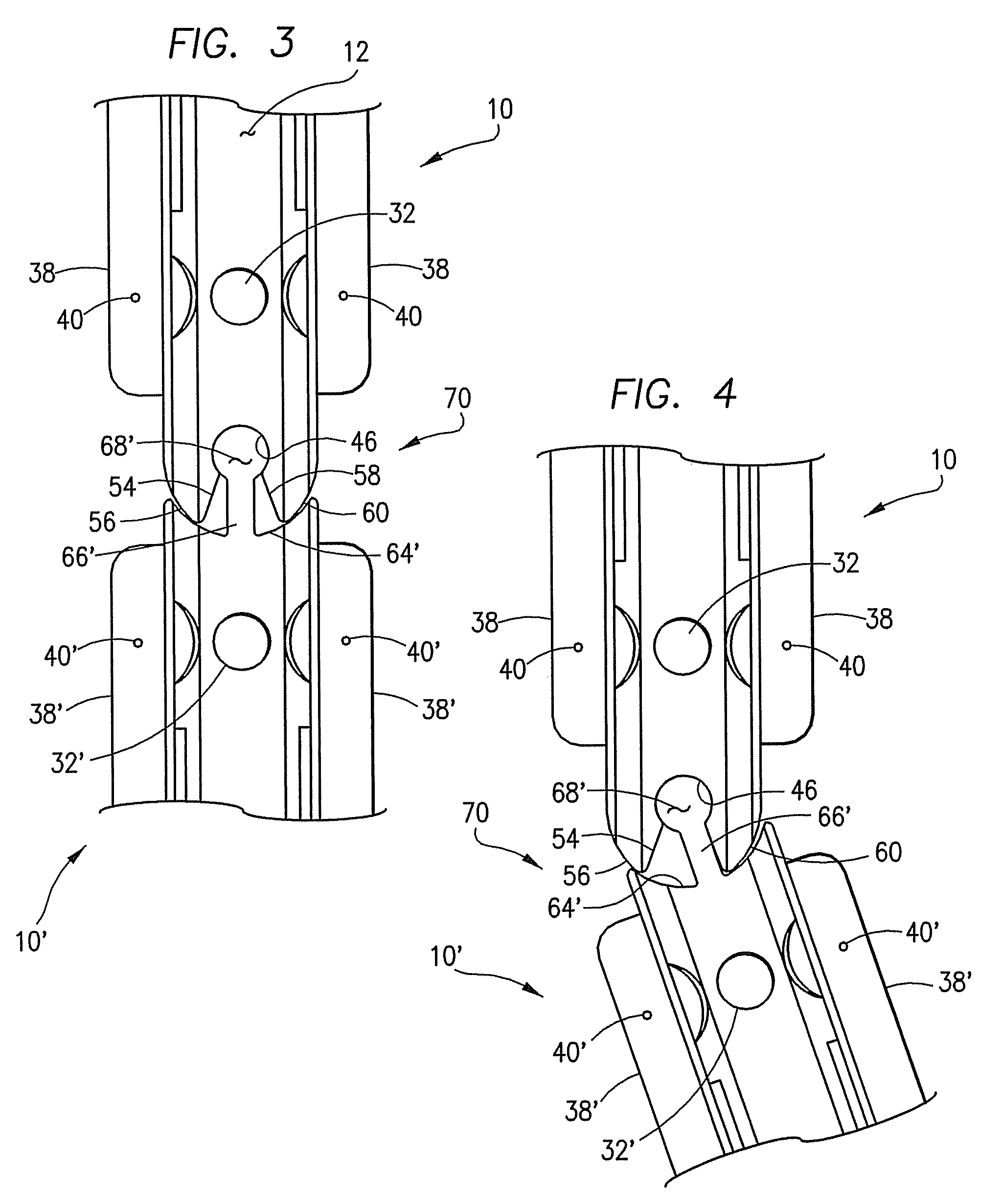End connector for barrier devices
a technology of end connectors and barriers, applied in roadway safety arrangements, roads, construction, etc., can solve the problems of high friction factor, little or no ability of concrete barriers to absorb shock upon impact, and heavy weight of reinforced concr
- Summary
- Abstract
- Description
- Claims
- Application Information
AI Technical Summary
Benefits of technology
Problems solved by technology
Method used
Image
Examples
Embodiment Construction
[0016]Referring now to the Figs., the barrier device 10 of this invention comprises a top wall 12, a bottom wall 14, opposed end walls 16, 18, and, opposed side walls 20, 22 which are interconnected to collectively define a hollow interior. A number of barrier devices 10 may be arranged end-to-end to form an essentially continuous wall. Two barrier devices 10, 10′ are shown in FIGS. 3 and 4 which are identical in structure and function, and therefore the same reference numbers are used to identify like structures with the addition of a “′” to the numbers associated with the barrier 10′.
[0017]In the presently preferred embodiment, each of the walls 12-22 are formed of a semi-rigid plastic material chosen from the group consisting of low density polyethylene, acrylonitrile or butadiene styrene, high impact styrene, polycarbonates and the like. These plastic materials are all inherently tough and exhibit good energy absorption characteristics. They will also deform and elongate, but wi...
PUM
 Login to View More
Login to View More Abstract
Description
Claims
Application Information
 Login to View More
Login to View More - R&D
- Intellectual Property
- Life Sciences
- Materials
- Tech Scout
- Unparalleled Data Quality
- Higher Quality Content
- 60% Fewer Hallucinations
Browse by: Latest US Patents, China's latest patents, Technical Efficacy Thesaurus, Application Domain, Technology Topic, Popular Technical Reports.
© 2025 PatSnap. All rights reserved.Legal|Privacy policy|Modern Slavery Act Transparency Statement|Sitemap|About US| Contact US: help@patsnap.com



